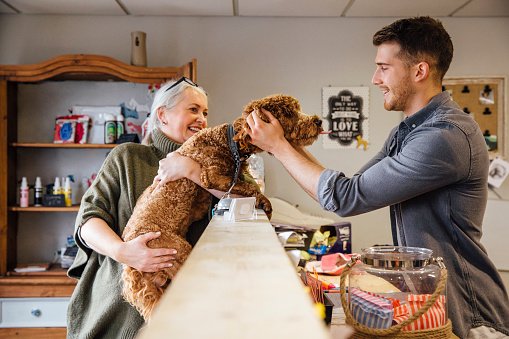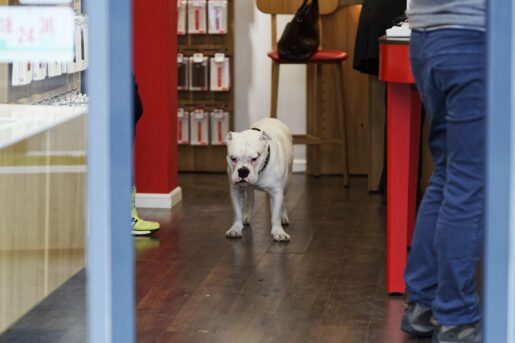Affected by Coronavirus pandemic, the global economy is generally in a downturn, but the healing power of the “pet economy” is still strong, even “up against the current.”
For people forced to live at home during the epidemic, buying pets for their homes has become an important way for many people to relax and emotionally sustenance.
The pet market in many countries is experiencing explosive growth.
U.S. pet economy ushered in explosive growth
The United States is currently the world’s largest pet economy. According to a report released by the American Pet Products Association last year, the number of households with pets in the United States reached 84.6 million, and the penetration rate of household pets rose to 68% .
Despite the impact of the new crown pneumonia epidemic this year, the number of pets purchased and adopted by American households has not declined, but has ushered in significant growth.
In animal shelters across the United States, this year has ushered in a wave of adoptions, and the number of animal adoptions across the country has repeatedly set records.
In April this year, applications for adoption of Kindley dogs increased by 900% . Some applicants need to wait in line for several months to be eligible for adoption.
Not only cats and dogs are popular, but turtles and hens are also taken away.
The ongoing epidemic has prevented many people from going out, and the companionship of pets has become a powerful weapon to resolve loneliness.

According to a survey by the American Pet Products Association, 74% of pet owners said that pets can help them relieve stress and improve happiness.
Similar to the situation in the United States, this year the UK pet market also ushered in a boom. According to reports, the average price of pet dogs in the UK has doubled this year to 2,100 Euros.
The price of an English bulldog is about 3,300 euros. During the social quarantine period in May, every miniature poodle sold online in the UK attracted nearly 1,900 potential buyers to snap up each sale.
The increase in the number of pets also drives the rise of pet-related consumption. According to estimates by the American Pet Products Association, Americans will spend a record 99 billion U.S. dollars on pets this year .
According to a survey conducted by consulting firm Deloitte, pet products have become one of the first choices for gifts.
Some market research companies predict that pet food retail sales in the United States this year will reach 31 billion US dollars, an increase of 7% year-on-year.
As the epidemic has caused most consumer industries to slump, the pet industry has maintained strong anti-recession characteristics and growth momentum in the United States.
The share price of Chewy, one of the largest pet product e-commerce companies in the United States, has risen by more than 260% this year, with a market value of 44 billion US dollars.
Major large retailers such as Amazon and Wal-Mart have benefited from the sale of pet products.
Summit Singh, CEO of Chewy, an American pet supplies e-commerce company: Due to the intervention of the epidemic, the growth of the pet market has accelerated, and the growth of several quarters has been compressed to this year.
Even if the epidemic is over, our understanding of the value of pets will not change, and this change is irreversible.
In China, the pet market is also hot. According to a report published by the data research company iiMedia Consulting, the size of China’s pet market reached 33.5 billion USD in 2019 and is expected to reach 44.7 billion USD in 2020.
From 2015 to 2019, the compound annual growth rate of China’s pet market reached 20%. The pet industry is gaining momentum, which also brings benefits to related companies.
The pet food concept stock “China Pet Stock” in the domestic A-share market has risen by more than 100% this year .
Some organizations predict that although the current domestic pet market has exceeded the 200 billion mark, compared with the United States and Japan, the pet ownership rate and consumption amount are still low, and the future market space is still huge.
It is expected that in the next five years, China’s pet industry can maintain The average annual growth rate is over 15%.
“It’s economy” continues to ferment the pet market showing a humanized trend
At present, the global pet industry chain is subdivided into three parts: upper, middle and lower reaches.
In addition to the upstream pet adoption and trading, the midstream includes pet food and supplies, and the downstream includes pet grooming, foster care, medical care, insurance and other services. In the increasingly complete pet industry chain, many people save money on their own and treat pets.
But it can “spend big money” and the “other economy” brought by pet consumption continues to ferment.
Pet food is in extremely rigid demand and is the most active part of the pet economy.
The competition among enterprises is the fiercest, and it is subdivided into various functions such as gastrointestinal health, bright hair and beautiful hair, strong bones, and weight loss .
In recent years, pet food has been infinitely close to human needs, and some companies even require researchers to taste it personally to confirm the taste.
Personalized and customized fresh food is a new growth point in the pet food market.
Some fresh pet food companies enter the pet’s age, breed, eating habits and other data, and then calculate the calories most suitable for it, so that pets say goodbye to puffed dry food, just like people Eat fresh and customized ingredients every day.
A report by the market research company Packaged Facts shows that 61% of US pet owners are willing to pay higher prices for customized pet food.
Pet medical treatment is the second core industry besides pet food.
Medical treatment for pet health is becoming more and more detailed.
Some pet hospitals at home and abroad even have oncology, CT and even MRI, high-end departments and medical treatments that can only be seen in tertiary hospitals. equipment.
In the United States, a cat with bladder stones costs US$1,500 for treatment, a dog with intestinal foreign body obstruction costs US$3,000, and the treatment of pet cancer costs more than US$10,000.
According to statistics, the average American income in 2019 is about US$3,500 per month. In order to treat some severely ill pets, some pet owners may spend half a year’s salary.
The high cost of pet medical care has also given birth to pet insurance. From medical insurance to liability insurance, the pet insurance industry has gradually emerged. Sweden is the country with the highest coverage of pet insurance.
The insurance rate is close to 40%, and the insurance rate for dogs is as high as 90%. Insurance costs vary with the breed, age and size of the pet.
The Labrador, which is generally loved by the Swedes, has an annual insurance cost of about 4,400 Swedish kronor.
The insurance cost of an American pet company is equivalent to that of Sweden.
American veterinarian: A very young Boston Terrier came to the clinic before. It had some vomiting symptoms. Fortunately, its owner took out insurance for him a week ago.
The final treatment cost was $10,000, and the insurance company paid for it. 90%, which is $9,000.
Although pet insurance has just started in most countries, the future market potential is huge. According to reports, the coverage rate of US pet insurance is only about 1%.
According to CNBC’s statistics, the US pet insurance market will reach US$2 billion in 2024.
Pet services continue to develop towards high-end and refined. In pet salons, perm and hair dyeing, nail repair, and essential oil massage SPA have gradually become exclusive services for cute pets.
In terms of fostering methods, there has also been a “pet hotel”. In a high-end pet hotel in New York City, the United States, people can choose different room types for their pets. The nightly accommodation costs range from 100-200 US dollars.
Pet residents can enjoy separate Pet room, movie screening, fitness training, go for a walk every morning and evening, and get a free fur maintenance every 7 days of stay.
Unlike other consumption, pet consumption is an emotional consumption, so it has anti-aging ability and stability in the global market.
As the relationship between people and pets deepens, the number of pets will continue to increase in the future, which will cure people’s pets.
The “money scene” brought about will also make more entrepreneurs and investors in the future.



